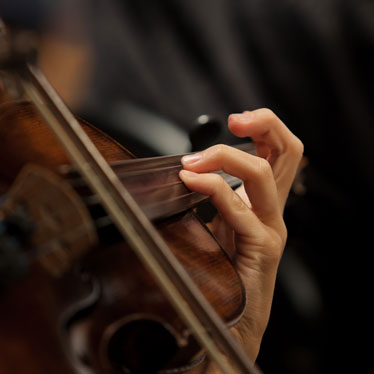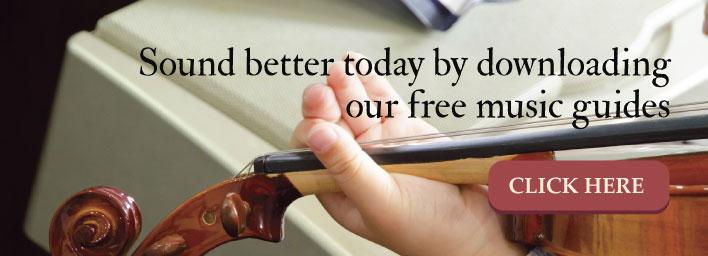How to Tune Your Violin With the Pegs

One of the most important skills to learn with any string instrument is how to properly tune it before you play. However, some instruments require a little more finesse than others. The violin, for instance, can be tricky to learn at first because the tuning pegs aren’t gears, like with a guitar.
If you don’t want to add additional weight to your violin with fine tuners, achieving that perfect pitch takes practice and patience. However, by making sure that a few preliminary steps are completed, you can learn this important skill.
Getting Started
Two major areas effect the tuning process, bridge placement and how the violin strings have been wound on the pegs. These two areas play an essential role in how easy or difficult it will be to tune your violin using just the pegs.
Bridge Placement: Often the difficulty and frustration of tuning a violin springs from improper bridge placement. You don’t want to accidentally snap or lean out of position while tuning. Plus, the force of a break can cause your soundpost to alter position inside the body or scar the surface finish, both of which require service by a luthier to fix. Double check these aspects before you begin to tune your violin:
- Vertical alignment—the bridge edge facing the tailpiece should form a 90 degree angle with the top plate of your violin. The edge that faces the scroll should look like it leans slightly towards the tailpiece. The feet of the bridge should fit flush on the top plate.
- Placement—When viewing the bridge from above, imagine an invisible line from the point of the notches located on the inside of the F-holes (which look like little arrows), the feet of your bridge should be situated so that the connecting line goes directly through the middle of each one.
- Horizontal alignment—The outside edge of the feet should line up with the extreme inside edge of the upper F-holes.
String Winding: This is where many problems with peg tuning occur. For your violin to stay in tune as long as possible and prevent unnecessary string breakage, the strings need to be wound so that the force of the winding is placed nearest to the edge of the peg box.
Essentially, you’ll need to ensure that the strings are wound closest to the hole in the peg at first, working outward toward the box. Make sure that the winding is flush and close together, so that the string doesn’t rest on itself.
Violin Tuning
Your violin pegs tighten or loosen the strings to achieve the correct pitch in an open position. However, because the pegs themselves are smooth and tapered, tuning your violin involves both a turning and pushing motion (pushing provides more space for the string to wind properly).
It’s important to remember that small movements have huge impact on the pitch. For example, when your strings are in a completely loose state (just held in position), it only requires about 180 degree turn to get close to the pitch (approximately ½ of a complete turn). For the E-string, it’s about half that, around a quarter turn.
Although you can start tuning with any of the violins strings, it’s easier to maintain an even balance of tension on your bridge if you begin with the middle strings, A and D. Also, never tune one string all the way before making adjustments to the others. It won’t work. For example, if you’re A string is perfect, when you move to the D string, the changes in tension will alter the A string, and you’ll have to start all over again. Tuning with violin pegs involves a series of balanced steps, gradually bringing each string to pitch along with the others.
Start with the A string, bringing it almost a full step from the reference tone, and then proceed to the D, G, and E string in the same fashion. Repeat this process until all the strings are tuned (or close) and then use your fine tuners to bring each one to the perfect pitch, if you have them.
A few other tips to keep in mind:
- It’s easier to increase (tighten the string) the pitch, so start below the desired note and work upward.
- Digital tuners are an invaluable resource for beginners. A digital tuner “listens” to a plucked string and displays its pitch so that you can monitor the change.
- Use tiny adjustments, equally distributed so that all of your strings maintain equal tension.
- Increase the pitch of A and E violin strings by turning the pegs clockwise (towards the scroll)
- Increase the pitch of D and G violin strings by turning counterclockwise (also toward the scroll)
Learning to tune your violin is an essential, and with practice and patience, you’ll master this important skill.

